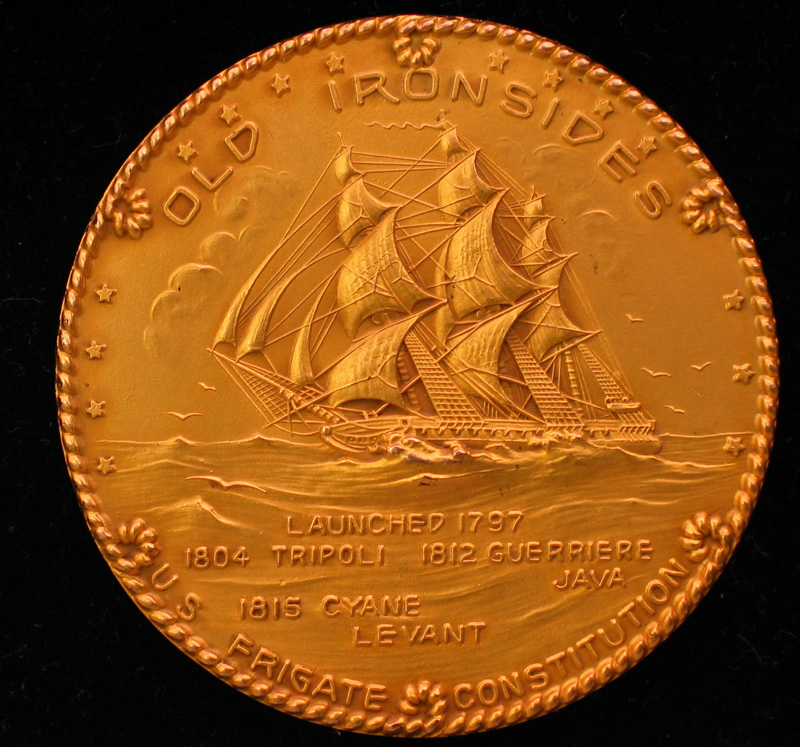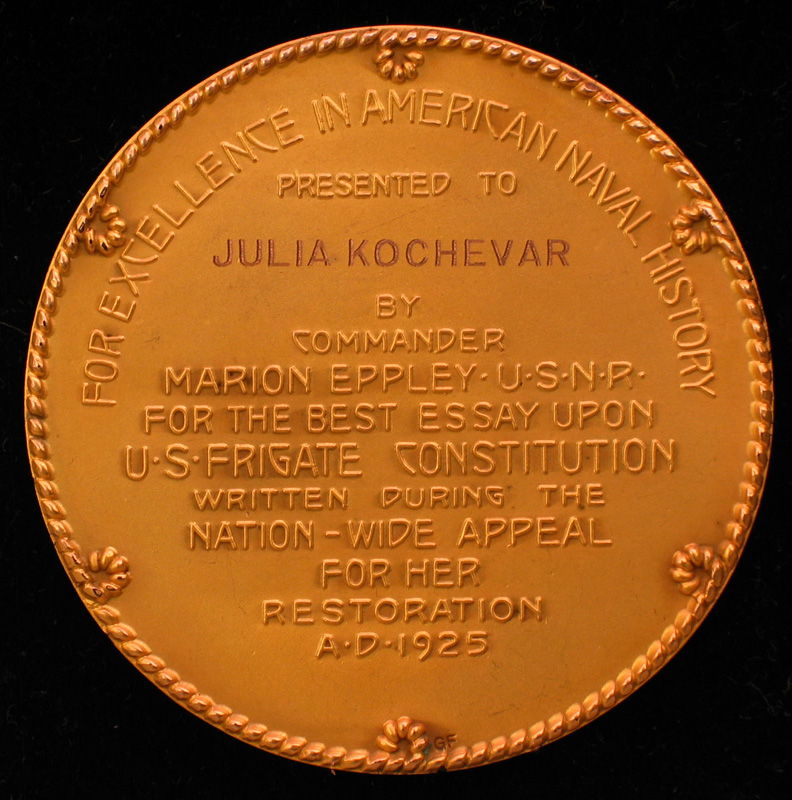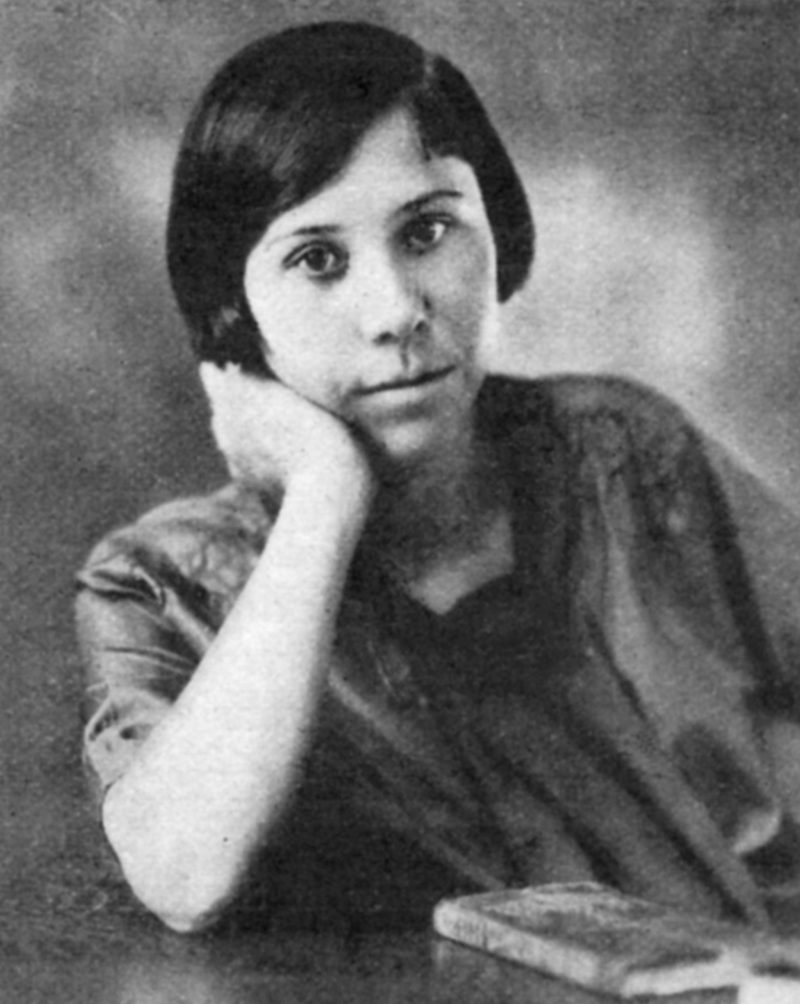Grand Junction, Colorado is about as far away from any ocean as you can get in the United States. Located high up in the Rocky Mountains, the small town was founded on mining interests and the railroad. Rarely have ships and navies been foremost on people’s minds there.
But in 1925, 13-year-old Julia Kochevar of Grand Junction was busy thinking about why restoring USS Constitution mattered to her.
Located 2,000 miles away in the Boston Navy Yard, USS Constitution was desperately in need of restoration at the time. The Elks Club, a national organization of about a million members, had agreed to help organize a national fund-raising campaign on behalf of the U.S. Navy with a focus on enlisting the participation of schoolchildren. As part of the campaign, the Elks organized an essay writing contest with state and national awards.
At Julia’s school in Grand Junction, and at more than 800 other schools across the United States, schoolchildren wrote essays and collected pennies to help pay for the restoration of a ship few of them had ever seen.
In an eloquent and impassioned appeal of 567 words, Julia described the role of Constitution as a source of American patriotism that had to be preserved.
“To her mast we shall tack the patriotism of our young Americans, around her let us gather the aspirations and ambitions of our youth,” she wrote. “With her as a guide they will sail triumphantly on, fearlessly buffeting the billows that arise up to engulf them.”
She won the statewide contest, earning a bronze medal from the Elks, and several months later she was announced as the national winner. She received a second medal and was invited to the Elks’ national conference in Chicago to read her essay, which was also published in the organization’s national magazine.




Julia Kochevar’s national award medal. [USS Constitution Museum Collection, 311.2]
It was a proud accomplishment that she carried for a lifetime. In her senior high school yearbook, four years later, her class photo was accompanied by the caption, “Her favorite ship is Old Ironsides.”
Like the inspired youth she wrote about, Julia Kochevar ventured boldly through the course of her own life, surviving myriad storms. The daughter of Slovenian immigrants, Julia Kochevar had been born in South Dakota and lived most of her life in Grand Junction, Colorado, where her father was a machinist for the railroad. She graduated high school in 1930, into the depth of the Great Depression. She took business classes at a local college while still in high school, and found work in a variety of jobs throughout the 1930s.
She was married three times over the course of her life, and was widowed twice. She owned and worked in a wide variety of businesses, sometimes in partnership with her husbands and often on her own, which was rare at a time when most women did not work outside the home. As one of her nieces wrote recently describing her, “She wasn’t a traditional-type woman.” In 1955, she started a 24-hour telephone answering service for businesses in the Grand Junction region. The service was the first of its kind for the area, but Kochevar had worked in a similar business while living in southern California during World War II. Later, she lived for several years in Alaska, where her second husband worked as a geophysicist for an oil company. They returned to Colorado after surviving a massive earthquake that struck Anchorage in 1964.
In 1977, Kochevar donated her original typewritten essay on “Old Ironsides,” along with the medals she received, to the USS Constitution Museum. Her words and awards continue to inspire new generations at the Museum.
Julia Kochevar died in 1994 in St. George’s, Utah, and was buried in a family plot in Grand Junction, Colorado.
Below is a full transcription of Julia Kochevar’s original, national award-winning essay on the value of USS Constitution. No changes have been made to the original grammar or syntax.
“Why Will The Preservation Of The U.S. S. Constitution, ‘Old Ironsides’, Promote Patriotism”?
Julia Kochevar
Age Thirteen
October, 1925
St. Joseph School, Eighth Grade
Grand Junction, Colorado
The ship Constitution was built in Boston and was launched in 1797. A short time after her launching she saw active service by helping to put an end to the unjust exactions of the Barbary pirates. Early in the War of 1812 she made a remarkable escape from a whole squadron of pursuing English vessels off the coast of Jersey. That was would have again made us subjects of Great Britain were it not for ”Constitution, – Old Ironsides.” She it was that by her victories stunned the British navy, thrilled the United States from end to end, and gave new hope and courage to our disheartened people.
Today our “Old Ironsides” lies rotting and falling to pieces in Boston harbor. For nearly one hundred and thirty years she has been with us. She fought our fights and won our battles, and now shall we let her perish? Shall we prove so ungrateful?
The British nation has never permitted the “Victory”, the flagship of their great Admiral Nelson, to fall into decay. As often as it is necessary they rebuild it. Why? They want to preserve it as a monument to the valor of the British seamen, so that the youth of Britain may never forget what victories their nation has won. Is our “Old Ironsides” less deserving of consideration? Can we afford to let this venerable relic of past victories, our symbol of bravery on the sea, be destroyed? No enemy gun has succeeded in sinking her, shall we do what her enemies failed to do? God forbid. It must never happen.
“Old Ironsides” must be preserved. “Old Ironsides” is our family heirloom. She belongs to all generations of Americans. We shall save her. Thousands of patriotic Americans to come will reverently tread her decks, they will go down into her lonely cabins once crowded with life and death, they will gaze upon her guns that gained our victories, and from all this they will get new inspirations and a renewed and increasing love of our country and of our heroes whose daring and whose bravery have kept us free.
Twice before the cry went forth. “‘Old Ironsides’ is unserviceable; she should be dismantled,” but loyal American hearts understanding the meaning of patriotism said “No. ‘Old Ironsides’ shall not be dismantled, she shall live.” To her mast we shall tack the patriotism of our young Americans, around her let us gather the aspirations and ambitions of our youth. With her as a guide they will sail triumphantly on, fearlessly buffeting the billows that arise up to engulf them.
“Old Ironsides” will make our boys and girls better citizens. Through her they will get a greater appreciation of American bravery, loyalty and justice, all clustering around and strengthening our faith and trust in our peerless country, the United States.
Our souls thrill at the realization the “Old Ironsides” is a living embodiment of all that is high and holy in the cause of liberty. We would not give up our liberty without the supremest struggle; so we keep “Old Ironsides” the instrument that secured that liberty and handed it down to us that we may enjoy its blessings. Not only are we fired with enthusiasm, but the flame of that great inspiration – patriotism – will burn in the breasts of the generations of America to come, because “Old Ironsides” will be there to kindle the spark.
The Author(s)
Carl Herzog
Public Historian, USS Constitution Museum
Carl Herzog is the Public Historian at the USS Constitution Museum.
